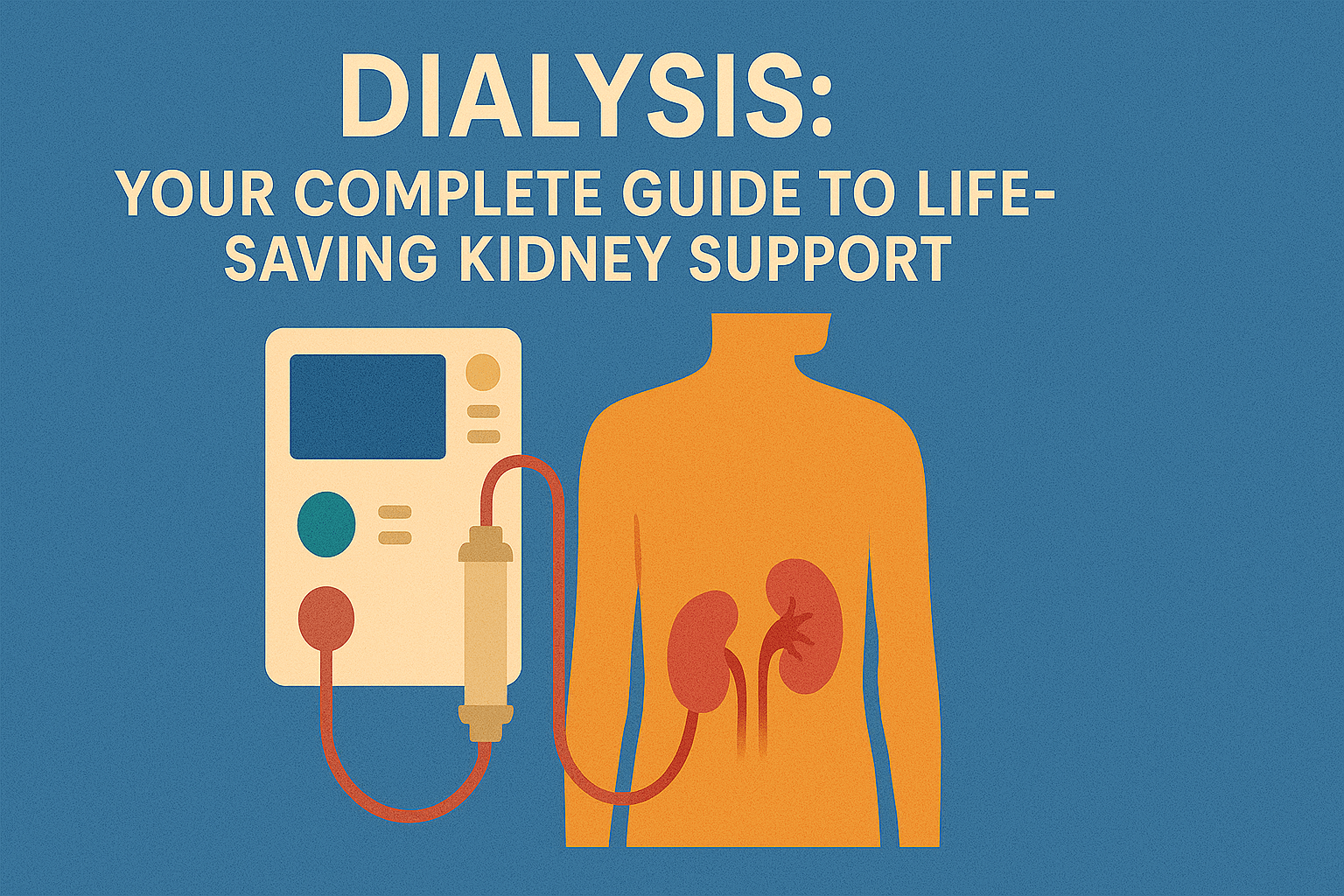When you imagine a kidney working, you picture blood filtering through the kidneys. Every single day, roughly 50 gallons of blood are filtered through the kidneys in order to remove waste and balance fluids. Consider what happens when these vital organs malfunction: Enter dialysis. Often confused with a medical procedure, dialysis can be better explained as a lifeline.
In our article, we try very hard to explain the what, the why, and the how of dialysis in layman’s terms and backed up with real stories and expert tips, peering into the future of kidney care.
Why Dialysis is Important
Chronic Kidney Disease (CKD) in the U.S. alone affects more than 37 million people. When kidneys lose function (usually below 10-15%), dialysis becomes vital in preventing toxins, extra fluid, and wastes from accumulating in the body.
End-stage kidney failure is fatal if not for dialysis or a transplant. Dialysis prolongs life, enhances its quality, and provides patients with time to wait for transplantation or explore other treatment options.
Key Benefits and Insights
- Life-Saving Treatment: Eliminates wastes and excess fluid, and keeps electrolyte levels in balance.
- Enhanced Quality of Life: Enables patients to regain energy, appetite, and concentration.
- Flexible Choices: The two primary types of dialysis allow for customization.
Two Main Forms of Dialysis
1. Hemodialysis:
- Performed in a clinic or hospital (at home is possible with training)
- Blood filtered through a machine
- Three times a week for three to five hours.
2. Peritoneal Dialysis:
- Usually done at home daily
- Uses your abdomen’s lining (peritoneum) and cleansing liquid
- Provides more freedom and independence
Step by Step: How Dialysis Works
For Hemodialysis:
- Access Site Preparation: AV fistula or graft created in the arm.
- Check-In and Set-Up: Weight, vitals, and access site examined.
- Blood Filtration: Blood flows out, gets cleaned in the dialyzer, and returns.
- Recovery and Hydration: Most patients feel tired afterward.
For Peritoneal Dialysis:
- Catheter Insertion: Placed surgically in the abdomen.
- Dialysate Infusion: A Special fluid fills your abdominal cavity.
- Dwell Time: Solution sits and absorbs waste.
- Drain and Repeat: Old fluid is drained and replaced.
Real World Stories: Mark’s Journey
Mark, a 54-year-old software engineer diagnosed with CKD stage 5, “My nephrologist said dialysis, and my heart sank,” he recalls. He went for peritoneal, which allowed him to keep his work schedule. “I do my treatment at night while I sleep. It gave me my freedom back.”
His advice: “Find out all you can and ask questions. Dialysis is manageable.”
Actionable Tips and Advice
- Planning Early: Planning for dialysis before you reach kidney failure improves outcomes.
- Drink Enough Fluids – Do Not Overdo It: Fluid intake should be based according to your doctor.
- Follow a Kidney-Friendly Diet: Control sodium, potassium, and phosphorus.
- Maintain a Routine: Helps manage energy and lifestyle.
- Get Support: Join a CKD support group, either online or face-to-face.
Common Pitfalls
- Missing Sessions: Skips lead to serious complications.
- Ignoring Dietary Restrictions: Can lead to fluid overload or dangerous electrolyte levels.
- Delaying Access Site Surgery: Ahead is a must!
- Not Reporting Symptoms: If something doesn’t feel right, let your healthcare team know.
Future Trends in Dialysis
- Wearable Artificial Kidneys: Portable machines are under development.
- Regenerative Medicine: Scientists are exploring ways to regrow kidney tissue.
- Home Dialysis Growth: There is a push for at-home solutions from Medicare and insurers.
- Telehealth Integration: Virtual monitoring and consultations are coming into play.
Innovations are incubated at leading institutions like the Mayo Clinic, the Cleveland Clinic, and DaVita Kidney Care.
Conclusion: A Lifesaving Option, Not a Life Sentence
Dialysis can be quite intimidating in the beginning, but never should it take over your life. With adequate education, tools, and support, any person can survive and thrive. From personal treatment plans in the present to futuristic technology, perhaps one day replacing the machines, there is now more hope than ever before.
If you’re considering dialysis for yourself or a loved one, speak to the nephrologist, talk about hemodialysis and peritoneal options, and get in touch with a kidney care team for personalized advice.
✉️ Subscribe for more expert-backed health tips and treatment breakthroughs delivered straight to your inbox!




